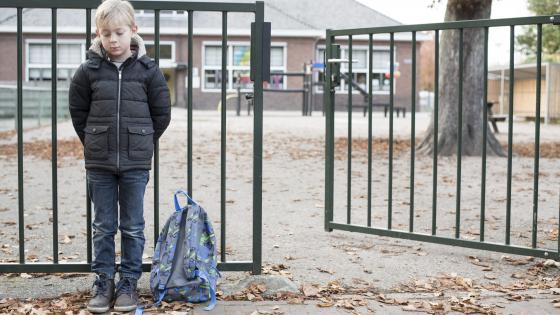One of the enduring public policy challenges is to expand economic opportunities. The Noble Laureate Gary Becker stressed that education is a key factor shaping economic opportunities and argued that well-functioning credit markets can reduce the degree to which a child’s educational achievements (and hence the child’s economic opportunities) are determined by parental wealth. In particular, better functioning financial systems make it easier for families to borrow to invest in the academic development of their children, loosening the connection between parental wealth and children’s education and economic horizons. Investments in academic development can include direct spending on schooling or spending that indirectly improves education (such as through purchasing homes in communities conducive to academic success) or addressing health conditions (Chetty et al. 2016, Sun and Yannelis 2016). Furthermore, financial development tends to boost family incomes (Levine 1997, 2005), which also increases expenditures on children’s education (Blau 1999).
There may, however, be a dark side to financial development and children’s academic success. Financial development might impede children’s educational development by lowering the quantity and quality of parenting. In particular, financial development that eases constraints on borrowing tends to spur firms to invest. The investment, in turn, tends to increase demand for workers, boosting employment hours and earnings (Beck et al. 2010, Popov and Rocholl 2018). If greater labour demand entices parents to ‘substitute out’ of childrearing and into paid employment (and there are no good alternatives such as grandparents or effective childcare), this substitution could harm children’s academic development (Aizer 2004, Juhn et al. 2015, 2018). Furthermore, if additional employment hours deplete parental energy and patience, financial system improvements that increase parental employment could harm the quality of parent-child interactions, with adverse ramifications on children’s educational performance.
As a result, it is therefore an empirical question whether policy, regulatory, and legal reforms that improve the operation of financial systems facilitate or impede children’s academic development.
Our recent study addresses this debate (Qing et al. 2020). We evaluate the impact of regulatory reforms that enhanced financial development on children’s academic performance and the amount (and quality) of time that parents spend on childrearing. Our work is novel in that we follow parents and their children through time, starting in 1986 and running through to 2005. We have information on children’s test scores, the total employment hours of parents (and when they work those hours), the number of hours that children spend watching television, playing video games, and doing homework (both on school days and over weekends), parental monitoring of children’s activities, and parent-child communications about school.
As a regulatory reform that enhanced financial development, we use changes in restrictions on the ability of banks to compete with each other across US state boundaries. In particular, starting in 1995 and continuing through to 2005, individual states implemented and eased (to differing degrees and in different years) regulatory restrictions on ‘out-of-state’ banks establishing branches within their borders. Liberalising interstate branch regulations spurred competition among banks, boosted efficiency, and fostered financial development – as shown by Rice and Strahan (2010). Thus, we use cross-state, cross-time variation in barriers to interstate bank competition as a proxy for changes in financial development. When an individual state lowered regulatory barriers and allowed greater competition, this boosted financial development. Similarly, when states changed regulations to impede competition, this hindered the operation of banks and reduced financial development in the state.
We then examine the impact of these financial regulatory reforms on (1) children’s academic performance, and (2) the amount and quality of time that parents spend with their children. To measure parental engagement with and monitoring of their children, we use indicators of the number of hours that children spend watching television, playing video games, and doing homework, as well as the amount of time that parents spend participating in (or monitoring) children’s activities, and parent-child discussions about school and future educational opportunities.
The findings advertise the adverse effects of financial development on children’s education. Interstate bank branch deregulation that fostered financial development reduced academic achievement among children from low-income families, but not among those from high-income families. This is consistent with research showing the financial development increased the demand for lower-income workers but not the demand for higher-income workers, enticing parents from lower-income families to work more in salaried jobs. The estimated impact is material. The estimates suggest that if a state changes its regulations from prohibiting out-of-state banks from establishing branches within its borders to allowing unrestricted interstate branching, children’s age-adjusted test scores fall by 8% among low-income children in low-income families.
There is also direct evidence on the mechanism linking financial development and the decline children’s educational achievement among low-income families. Financial development enticed low-income parents with higher wages to substitute out of childrearing and into paid employment. First, financial development induced mothers from low-income families to work more hours and work more hours during non-school times (there was no effect on either mothers in high-income families or fathers in either low- or high-income families). Second, among families in which financial development increased the employment hours of mothers, there is a reduction in parental monitoring of children, a reduction in hours spent on homework during non-school hours (but no effect on homework during school), and an increase in hours spent on television and video games on school days (but not over weekends). Third, financial development reduced parent-child discussions about school and going to college among low-income families. Finally, when grandparents live with the ‘mother-child pair’, financial development did not hurt children’s academic performance. Thus, when there is an effective alternative for parents who are enticed to work more in paid employment, we do not observe an adverse impact of financial development and children’s education development. While our research focuses on grandparents, researcher also examines the role of high-quality childcare (Havnes and Mogstad 2011a, 2011b).
Returning to the debate on finance, education, and economic opportunity, our research indicates regulatory reforms that improve financial systems can impede the education of children from low-income families (but not children from higher-income parents). Our work shows that financial development increases the demand for low-income workers, and the resulting higher wages induces mothers from low-income families to work more in paid employment. This reallocation of parental time tends to have adverse effects on children’s academic development unless there are sound alternatives for the mother’s parenting time. This work does not reject past research showing that financial development boosts incomes and reduces income inequality. Rather, it shows that the positive labour market effects of financial development can have adverse effects on children, unless there are sound alternatives to traditional modes of parenting available to the family in question. Though beyond the scope of this research, high-quality daycare is one potential strategy for allowing lower-income families to reap the benefits of an improved financial system without their children suffering adverse educational repercussions.
References
Aizer, A (2004), “Home alone: Supervision after school and child behavior”, Journal of Public Economics 88(9-10): 1835-1848.
Beck, T, R Levine and A Levkov (2010), “Big bad banks? The winners and losers from bank deregulation in the United States”, The Journal of Finance 65(5): 1637-1667.
Becker, G S (1964) Human Capital: A Theoretical and Empirical Analysis, with Special Reference to Education, New York: Columbia University Press.
Blau, D M (1999), “The effect of income on child development”, Review of Economics and Statistics 81(2): 261-276.
Chetty, R, N Hendren and L F Katz (2016), “The effects of exposure to better neighborhoods on children: New evidence from the Moving to Opportunity experiment”, American Economic Review 106(4): 855-902.
Havnes, T and M Mogstad (2011a), “No child left behind: Subsidized childcare and children's long-run outcomes”, American Economic Journal: Economic Policy 3(2): 97-129.
Havnes, T and M Mogstad (2011b), “Money for nothing? Universal childcare and maternal employment”, Journal of Public Economics 95(11-12): 1455-1465.
Juhn, C, Y Rubinstein and C A Zuppman (2015), “The Quantity-Quality Trade-off and the Formation of Cognitive and Non-cognitive Skills”, NBER Working Paper 21824.
Juhn, C, Y Rubinstein and C A Zuppman (2018), “Spacing and the Quantity-Quality Trade-off”, University of Houston mimeo.
Levine, R (1997), “Financial Development and Economic Growth: Views and Agenda”, Journal of Economic Literature 35(2): 688-726.
Levine, R (2005), “Finance and growth: theory and evidence”, Handbook of economic growth 1: 865-934.
Popov, A and J Rocholl (2018), “Do credit shocks affect labor demand? Evidence for employment and wages during the financial crisis”, Journal of Financial Intermediation 36: 16-27.
Hu, Q, R Levine, C Lin and M Tai (2020), Finance and Children’s Academic Performance (No. w26678), National Bureau of Economic Research.
Rice, T and P E Strahan (2010), “Does credit competition affect small‐firm finance?”, The Journal of Finance 65(3): 861-889.
Sun, S T and C Yannelis (2016), “Credit constraints and demand for higher education: Evidence from financial deregulation”, Review of Economics and Statistics 98(1): 12-24.







